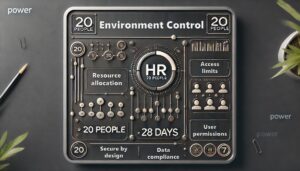In the realm of digital transformation, Microsoft’s Copilot in Power Automate is a groundbreaking AI-driven tool that enhances various types of automation by leveraging natural language processing and advanced machine learning algorithms. Copilot simplifies the creation, management, and optimization of automation workflows, making it accessible to users with varying levels of technical expertise.
In this article, we will explore different types of automations, and how to use Copilot and Power Automate in each area. These are the areas we will cover:
Robotic Process Automation (RPA): Copilot assists in RPA by enabling users to describe their automation needs in everyday language. This AI-driven feature translates these descriptions into detailed automation workflows that mimic human interactions with software applications. For example, a user can instruct Copilot to automate the process of extracting data from invoices and inputting it into an accounting system. Copilot’s ability to understand and execute complex instructions reduces the time and effort required to set up and maintain RPA solutions, making it easier to automate repetitive and time-consuming tasks
Digital Process Automation (DPA): In the context of DPA, Copilot facilitates the integration of various applications and data sources to streamline business processes. Users can describe a high-level objective, such as synchronizing patient data between healthcare systems, and Copilot will generate the necessary steps to achieve this goal. By leveraging AI, Copilot ensures that workflows are optimized for efficiency and accuracy, reducing the need for manual data entry and improving overall process integration
Process/Task Mining: Copilot also plays a vital role in process and task mining by analyzing workflow data to identify inefficiencies and recommend improvements. Users can query Copilot to understand bottlenecks in their processes and receive suggestions for optimization. This capability helps organizations continuously refine their operations, ensuring that automation workflows remain effective and adaptable to changing business needs
By incorporating Copilot into these various types of automation, Microsoft Power Automate not only enhances the functionality and usability of automation tools but also democratizes access to advanced AI capabilities. This empowers businesses to streamline operations, improve accuracy, and achieve greater efficiency with minimal manual intervention.
Robotic Process Automation (RPA)
Robotic Process Automation (RPA) is the process of using “robots” to perform repetitive tasks, allowing human resources to focus on strategic activities. Power Automate allows users to create desktop flows that automate tasks on their desktop and web applications. With prebuilt drag-and-drop actions and the ability to record user actions, Power Automate Desktop simplifies the automation of repetitive desktop processes, making it accessible to users with varying levels of technical expertise.
One of the primary challenges in building desktop flows is the complexity and steep learning curve associated with understanding and using the various actions and configurations available in Power Automate Desktop. Creating flows manually can be time-consuming, particularly for those new to the platform. It is also at times challenging to debug errors, optimize automation processes of the solutions built. Luckily Copilot offers a simple way to help users build desktop flows more efficiently and accurately, thus accelerating the development of RPA solutions.
Using Microsoft 365 Copilot to Build Desktop Flows
To build desktop flows with Microsoft 365 Copilot, open Power Automate Desktop and select Copilot from the top right corner of the console window. Alternatively, access it from the designer’s vertical menu on the right. Next, describe the automation task you want to perform in natural language. For example, you can type “Create a flow to move files from one folder to another based on their extension”. Copilot will generate a flow based on your description, providing you with a ready-to-use automation script that you can further customize if needed. To edit an existing flow, open it in the designer and use Copilot to make modifications. You can provide instructions like “Add a step to send an email notification after moving files” or “Remove the step that logs the file names”.
You can also ask Copilot to generate guided instructions to help you build or optimized desktop flows. For example, you might ask, “How do I use the Excel automation action?”. Copilot provides detailed answers and links to documentation pages for additional information, ensuring you have the resources needed to understand and use the features effectively. Additionally, Copilot can suggest best practices and optimizations, ensuring that the flows run efficiently and with minimal errors. Users can then refine and customize the desktop flows they are working on as needed.
Copilot in Debugging Desktop Flows
When errors occur during testing, Copilot can help identify and resolve them. Users can describe the issue in natural language, and Copilot will generate potential solutions. For example, if a flow fails to move files, a user might type “Why is my flow failing to move files?” Copilot will analyze the flow and provide insights into possible misconfigurations or missing steps. Copilot can also provide analysis on flow performance and suggest modifications to improve the flow’s efficiency and reliability.
Furthermore, Copilot supports multi-turn prompts, allowing for ongoing conversations where the context of previous messages is remembered. This feature is beneficial for complex debugging sessions where multiple related questions need to be addressed sequentially. For instance, a user can start by asking about overall flow success rates and then drill down into specific errors and their causes.
Digital Process Automation (DPA)
Digital Process Automation (DPA) is a strategy that uses digital technology to automate and optimize entire business processes. Unlike Robotic Process Automation (RPA), which focuses on automating individual tasks, DPA aims to streamline end-to-end workflows, integrating various systems and applications to improve efficiency, compliance, and overall business performance. DPA processes use predefined business rules to route information between different people and systems, and provide end-to-end process tracking that allows organizations to monitor, audit, and measure the performance of their workflows.
In Power Platform, Power Automate helps automate workflows and tasks between different applications and services. It connects disparate systems, ensuring seamless data flow and process execution across the organization. It then routes this data according to predefined business rules, ensuring that the right information reaches the right place at the right time. Microsoft Copilot significantly enhances the creation and management of Power Automate cloud flows by leveraging AI to simplify and streamline the process.
Copilot in Building Power Automate Flows
Copilot allows you to describe what you want your flow to do using everyday language. When starting a new flow, click on “Create” from the left navigation pane and choose “Automated flow.” Use the Copilot prompt box to describe your flow in detail. For instance, you might type, “When a new item is added to SharePoint, send an email notification to the manager.” Copilot will suggest the necessary connectors, such as SharePoint and Outlook, and actions to set up this flow.
For better results, be specific with your requests. Instead of a vague prompt like, “I want to process an email,” specify, “When an email arrives, post the subject to ‘General’ Teams channel.” Mention the connectors explicitly, such as “Outlook” and “Teams,” to ensure clarity. If the initial results are not as expected, refine your prompts iteratively. Adjust the details and re-run the prompts until you achieve the desired outcome
Testing and Optimizing Flows using Copilot
It’s recommended to test your automation incrementally as you build it. Each time you add a new step, test the flow to catch mistakes early, rather than building the entire flow and then testing it. Thanks to Copilot, it is now extremely easy to continuously test and optimize power automate flows.
Using Copilot, users can get real-time feedbacks as they build flows, and get simulated results and tips without actually running the flow. You can also opt to run tests through the traditional test feature, and use Copilot in identifying errors during the testing phase by analyzing the flow’s execution history and pinpointing where issues occur.
Process Mining
Process mining is a data-driven technique used to analyze and optimize business processes based on event logs extracted from various IT systems. It helps organizations gain insights into how their processes actually operate, identify inefficiencies, and implement improvements. Process mining sits at the intersection of data science and business process management (BPM), providing a more quantitative and detailed view of processes compared to traditional BPM methods.
There are three key types of process mining:
- Discovery process mining uses event log data to create a process model without any prior knowledge or pre-existing models. It helps to visualize and understand the actual flow of processes within an organization from scratch.
- Conformance checking compares the actual process, as recorded in the event logs, with an ideal or predefined process model. It identifies deviations and discrepancies between the intended and actual processes, which is crucial for compliance and quality control.
- Extension or performance mining, this type uses additional information to improve existing process models. It incorporates performance data such as processing times and costs to optimize and enhance the process further
Power Automate simplifies the process of collecting and integrating data from various sources into a central system. This automation ensures accurate and efficient data ingestion, which is crucial for maintaining data integrity and consistency in process analysis. Copilot provides another enhancement by allowing users to interact with the process mining tool using natural language queries. This makes it easier for non-technical users to gain insights and recommendations, as they can simply ask questions about process performance, bottlenecks, and automation opportunities
Setting up Process Mining with Power Automate and Copilot
To begin setting up cloud process mining in Power Automate, you first need to sign in to the Power Automate platform. Once logged in, navigate to the Process mining section located in the left navigation pane. This section is dedicated to setting up and managing your process mining activities. Under the “Create new process” section, click on “Start here” to initiate the setup of a new process. You will be prompted to enter a name for your process, and you may also add a description if desired. After filling in these details, click “Continue” to proceed to the next step.
In the subsequent step, you need to select your data source. In the “Data source” section, choose Azure Data Lake as the source for your data. Azure Data Lake is optimized for storing large volumes of data, making it suitable for process mining. Follow the instructions to complete the connection setup for the Azure Data Lake container, ensuring that the connection is properly configured. Once the connection is established, select the specific folder or file you wish to analyze. Copilot will then automatically identify and confirm the process based on the data provided, streamlining the setup process.
After selecting your data source, the next step involves ingesting the data and performing automapping. Copilot facilitates this by providing automapping suggestions for your data to ensure it fits the required schema for process analysis. Carefully review these automapping suggestions and confirm them to proceed. This step ensures that the data is correctly formatted and mapped for analysis. Once the data ingestion and mapping are complete, save the configuration. Your process is now ready for analysis, and you can proceed to use the process mining capabilities to gain insights and optimize your workflows.
Conclusion
Microsoft’s Copilot in Power Automate represents a significant advancement in the realm of digital transformation. By leveraging AI-driven technologies, Copilot simplifies the creation, management, and optimization of automation workflows, making these powerful tools accessible to users with varying levels of technical expertise.
Copilot’s capabilities in Robotic Process Automation (RPA) allow users to automate repetitive and time-consuming tasks by simply describing their needs in natural language. This feature not only reduces the complexity and time required to set up RPA solutions but also enhances accuracy and efficiency. In the realm of Digital Process Automation (DPA), Copilot facilitates the integration of various applications and data sources, streamlining business processes and improving overall process integration. This ensures that organizations can achieve their objectives with minimal manual intervention, leading to greater efficiency and accuracy.
Moreover, Copilot’s role in process and task mining is invaluable. By analyzing workflow data, it identifies inefficiencies and recommends improvements, enabling organizations to continuously refine their operations. This ensures that automation workflows remain effective and adaptable to changing business needs.
The integration of Copilot into Microsoft Power Automate democratizes access to advanced AI capabilities, empowering businesses to streamline operations, improve accuracy, and achieve greater efficiency. Whether through the automation of desktop tasks, the creation of complex cloud flows, or the optimization of business processes through process mining, Copilot enhances the functionality and usability of automation tools.
As businesses continue to navigate the complexities of digital transformation, tools like Copilot in Power Automate will play a crucial role in driving innovation and operational excellence. By making advanced AI capabilities accessible to a broader audience, Microsoft is helping to bridge the gap between technical and non-technical users, fostering a more inclusive and efficient digital workplace.







